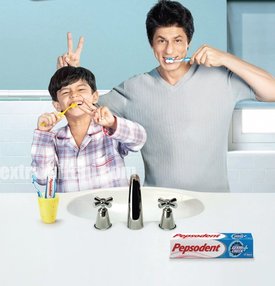 Unilever for hundreds of years are exploring business opportunities by meeting the unmet social needs of the people. It all started when William Lever launched the world’s first health soap and targeted to change the behavior of the people to promote hygiene in Britain. Since then the company has been following the changes in behavior of the consumers successfully for marketing their products. Today Unilever’s brand extends to meet one’s every day needs such as cleaning and washing. Now the company has mastered consumer behavior theory to that extend that it is now changing the behavior to fit in their products thereby increasing its sales.
Unilever for hundreds of years are exploring business opportunities by meeting the unmet social needs of the people. It all started when William Lever launched the world’s first health soap and targeted to change the behavior of the people to promote hygiene in Britain. Since then the company has been following the changes in behavior of the consumers successfully for marketing their products. Today Unilever’s brand extends to meet one’s every day needs such as cleaning and washing. Now the company has mastered consumer behavior theory to that extend that it is now changing the behavior to fit in their products thereby increasing its sales.
Unilever’s pepsodent marketing campaign can be set as a perfect example of increasing sales by changing the consumer behavior. Let’s find how Unilever did that:
Unilever five levers for consumer behavior change
Unilever first identified vital fundamental aspects about consumer behavior. They were the barriers that stop consumers from changing to a new behavior, which they call as triggers. These triggers prompt them to adopt a new behavior and then there are motivators -that make consumers stick to the new behavior.
Based on the above insights they designed a framework that could change one’s behavior. They called it as the five levers of change.
1. Make it understood
This lever raises the awareness of the new behavior and prompt people to accept the behavior
2.Make it easy
This lever makes people confident of what people are doing it.
3. Make it desirable
This lever establishes the fact to the people that what they are doing is socially accepted and follows the social norms.
4.Make it rewarding
This lever shows the proof and rewards to the people for continuing their behavior.
5.Make it a habit
This lever reinforces the people to continue the new habit.
Use of five levers of change as marketing tool
Unilever brought the five levers of change to life in their Pepsodent marketing campaigns. Unilever primarily did a exploratory research and found that world’s population brushed teeth only once in a day when it is scientifically proved that brushing twice a day with fluoride toothpaste can reduce tooth decay upto 50%. The company capitalized on the fact and decided to change the behavior from brushing once to twice in a day. For that they set the primary target as children and secondary target as parents and teachers who have a significant influence on changing the behavior of children.
Unilever, developed the campaign by using all the levers of changes. To “make it understood” they spread the message that brushing at night with fluoride could reduce tooth decay up to 50% among children. To “make it easy” they offered downloadable games which made it easy for the family to share the habit of brushing teeth at night. To “make it rewarding” they offered prizes to continue with the game.
To “make it desire” they created the role of dad in the advertisement campaign. The attempt was to pass on the good habits to children through parents and make them feel that what they are doing is acceptable in society. And, finally to “make it a habit” Unilever introduced sticker diaries to children encouraging them to continue the habit along with that they sent reminders to parents to monitor their children’s bed time habit.
Obviously, the campaign was a great success. The brand’s strategy to pitch in sales by changing the consumer behavior resulted in a win-win situation. The campaign to a great extent succeeded in changing consumer behavior and grow their business.
The future
The success of campaign does not end up by changing consumer behavior but how powerfully the behavior change stays. As the environment changes, consumer behavior too tends to change frequently and could become too complex. The challenge for the brand is how they tackle this complexity of behavior changes of the consumer.
[message_box title=”MESSAGE TITLE” color=”red”]The case is prepared based on secondary data and the purpose of this case study is to just bring out the key marketing strategies and techniques deployed by different firms from our perspective.[/message_box]

